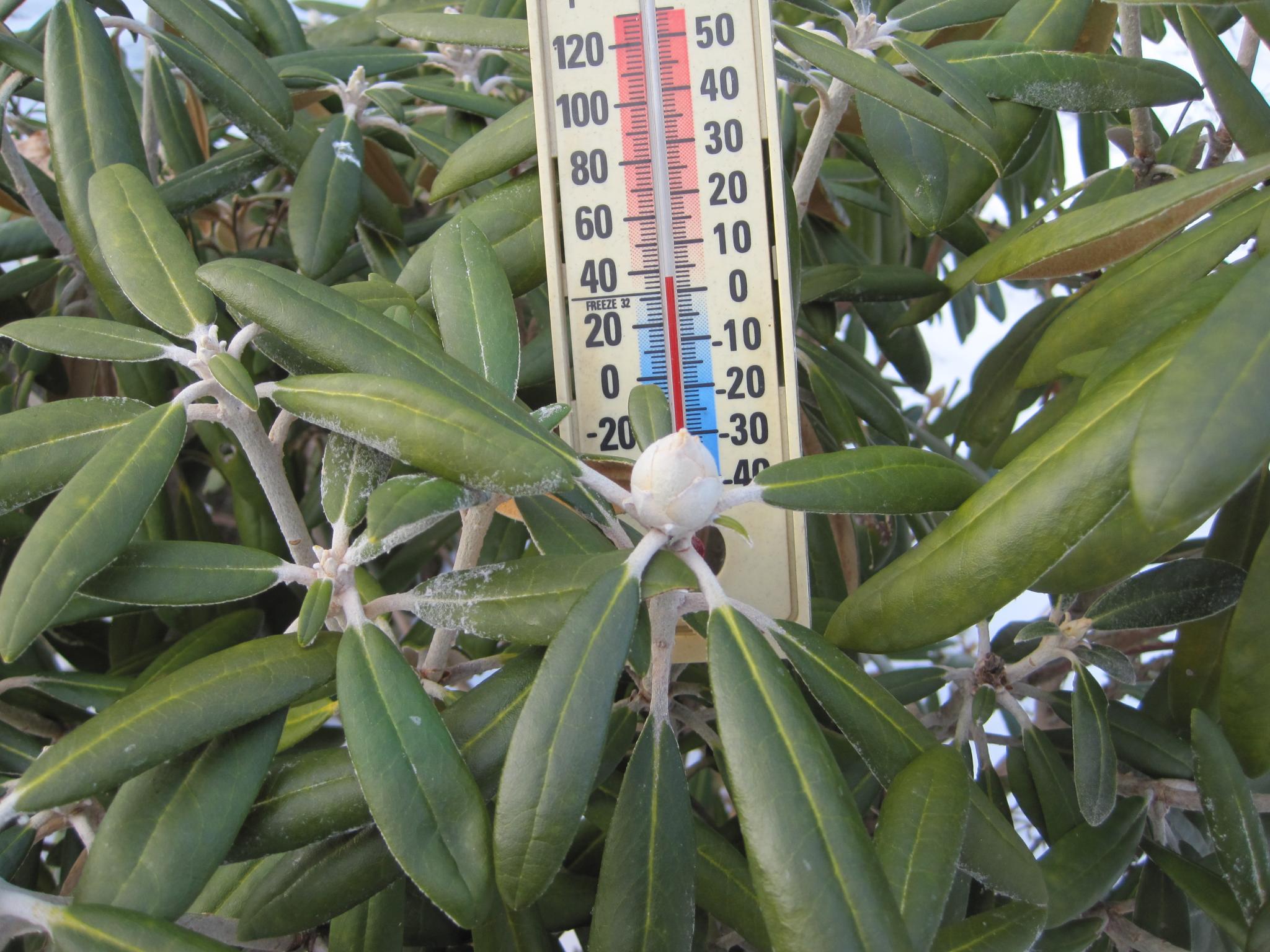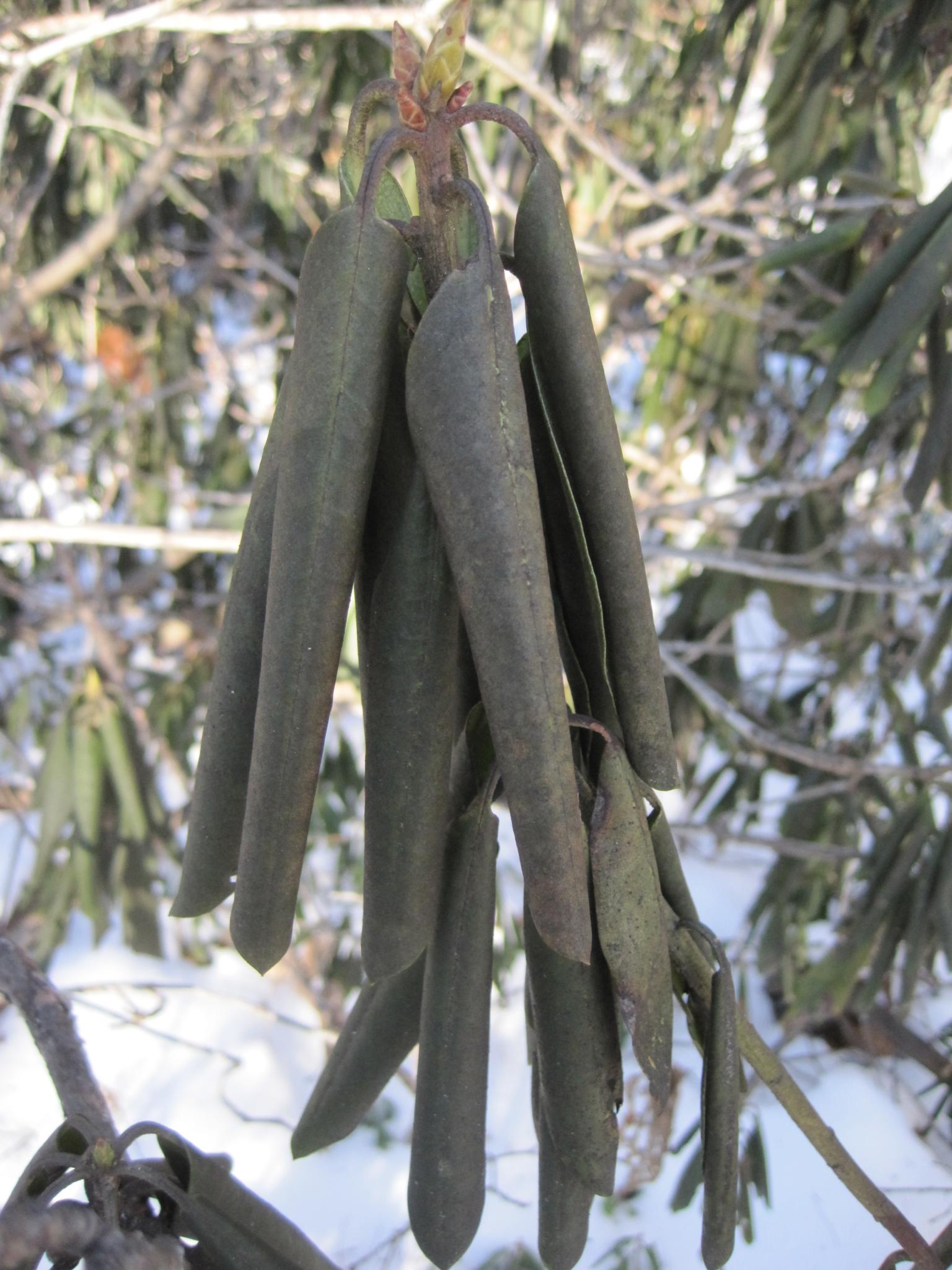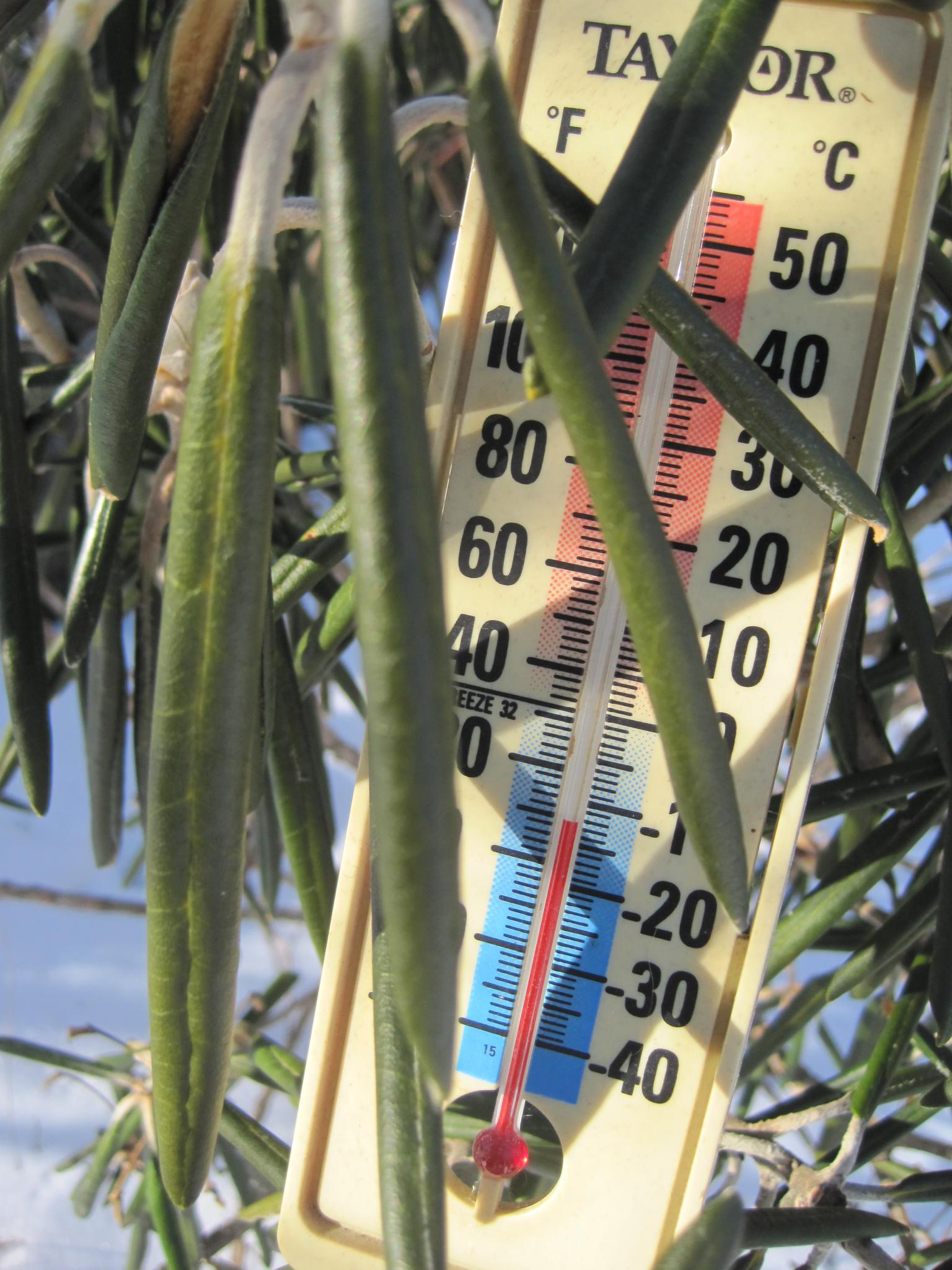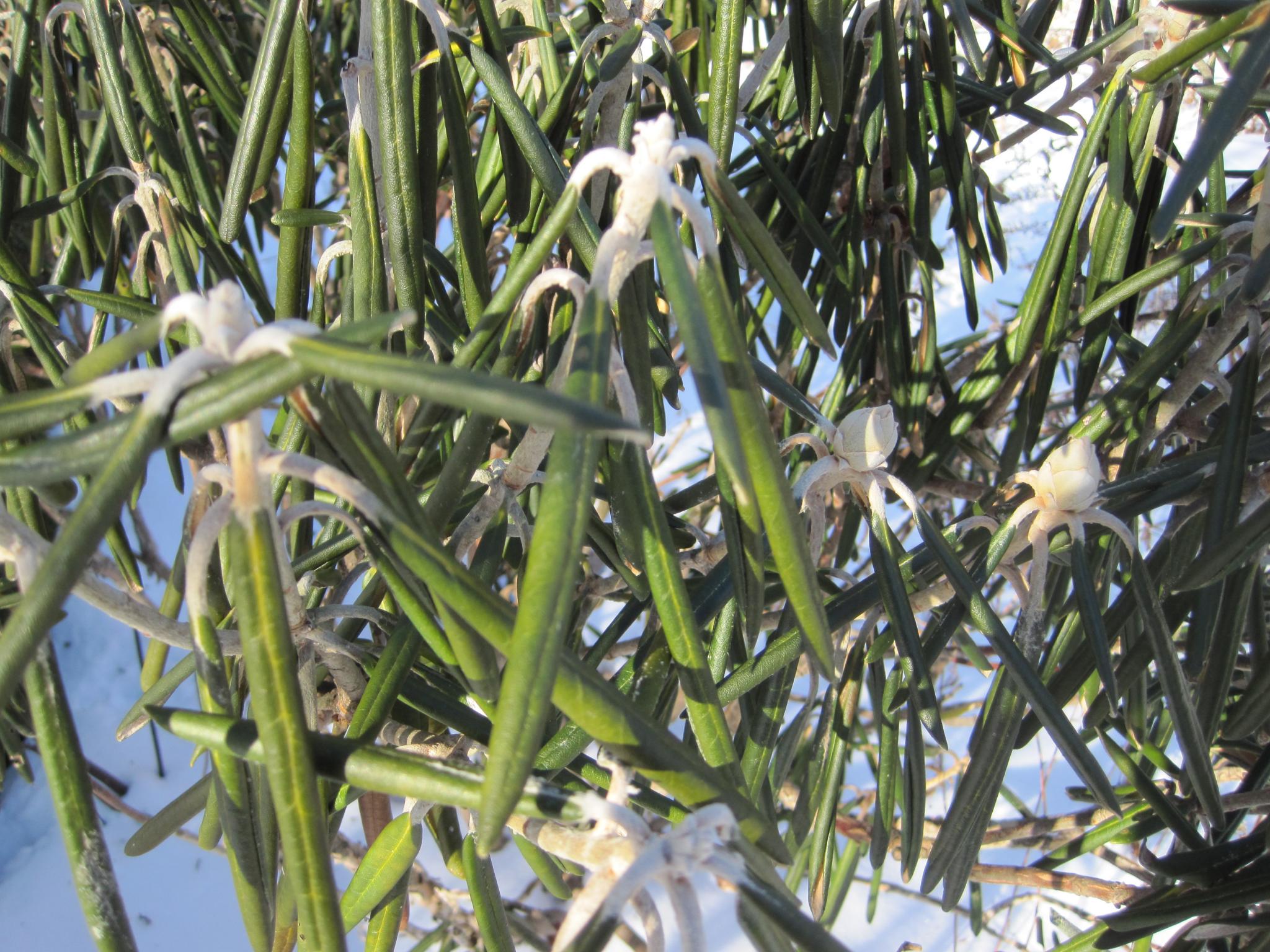
Their leaves can help show just how cold the weather is!
ADVERTISEMENT
I have loved and grown rhodies for decades... both in the NE and the Pacific NW.
Fanciers and gardeners have told me that rhodies curl their leaves in the cold partly to stop transpiration from the under surfaces of the leaves.... because cold air doesn't carry as much moisture and they cannot replace moisture lost without some warmth. So yes. They are very accurate thermometers as their lives depend on maintaining their moisture.
I've used my rhododendrens for years to deside how many layers of clothes I need to put on if I have to go outside. As a matter of fact, when my last outdoor thermometer gave up the ghost I didn't even bother to replace it.
Right now according to my ph app the temp is 16° and looking out the window even though it's a bright sunny day, the leaves on my rhododendrens are very tightly curled.
I don't know which species they are. They were already planted here when I bought my home. They get massive amounts of clusters of pink blossoms in the spring and the bumble bees adore them. The bushes come to life with all the buzzing. I always feel good when I walk by one and hear that. The bush on the side of the house has turned into more like a tree. It's now taller than the roof line. I love my rhododendrens.
I live in Canada and love the farmers almanac. I find the the articles so interesting and informative.
I regret not being able to purchase the GardenAnswers book as I was told they don’t mail to Canada. So sad. I do need garden help thanks Lou













